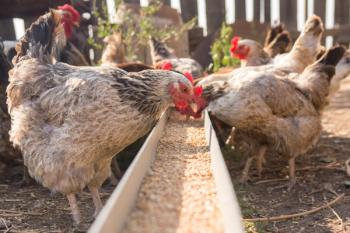
Machine learning models and spectral analysis provide a scalable alternative to conventional trace metal detection.


Rapid Sweetener Detection Achieved Through Raman Spectroscopy and Machine Learning

Infrared Spectroscopy with Kohonen Networks and Multivariate Analysis for Cocoa Content Prediction

Machine learning models and spectral analysis provide a scalable alternative to conventional trace metal detection.

A new study published in the journal Food Chemistry by lead authors Qian Zhao and Jun Huang from Zhejiang University of Science and Technology unveil a new data-driven framework for predicting resistant starch content in rice

Researchers at Wittenborg University of Applied Sciences have developed a non-destructive method using hyperspectral imaging combined with chemometrics and machine learning to accurately predict fat and protein content in diverse cheese types.

Researchers from the Institute of Agrifood Research and Technology (IRTA) in Catalunya, Spain used fluorescence and Raman spectroscopy to explore complex tissue changes behind wooden breast myopathy in chickens.

Because the United Arab Emirates is seeing an increase in pet ownership, the quality of both dry and wet pet food is undergoing greater scrutiny to ensure its safety and efficacy. Lucy Semerjian, who works as a Chair and Associate Professor in the Department of Environmental Health Science at the University of Sharjah in Sharjah, United Arab Emirates, recently explored this topic in a recent paper

A recent study conducted in the Journal of Food Composition and Analysis examined the concentrations of ten metals in 52 commercially available wet and dry cat food samples, assessing their compliance with U.S. and European pet food safety standards. The lead author of this study, Lucy Semerjian, recently sat down with Spectroscopy to discuss the findings of her study.

Researchers from Hebei University and Hebei University of Engineering have developed a hyperspectral imaging method combined with data fusion and machine learning to accurately and non-destructively assess walnut quality and classify storage periods.

A new study demonstrates that paper bagging significantly enhances Fuji apple quality and appearance. Hyperspectral imaging combined with machine learning offers a powerful, non-destructive method for evaluating fruit grown under different cultivation conditions.

In a recent study published in the journal Beverages, a team of researchers from the National Institute for Research and Development of Isotopic and Molecular Technologies and Babeș-Bolyai University explored a new way to improve wine authentication

A recent study published in the journal Food Chemistry explored Brazil’s cachaça industry, focusing on a new analytical method that can confirm the geographic origin of cachaças from the Brejo Paraibano region in Brazil.

A new study highlights how chemometrics-powered spectroscopic techniques offer a fast, non-destructive, and cost-effective method for detecting phenolics and vitamins in foods.

Researchers in China propose novel postharvest processing mode using vis-NIR spectroscopy and deep learning to accurately measure pomelo sweetness.

Researchers from Tianjin Agricultural University, Nankai University, and Zhejiang A&F University have developed a highly accurate method using near-infrared spectroscopy and machine learning to rapidly detect and classify microplastics in chicken feed.

A recent study explored new rapid screening alternatives to traditional methods for detecting pork adulteration in meatballs, aiding halal food authentication efforts.

Researchers in China have pioneered a rapid, green, and non-destructive detection system using NIR spectroscopy and machine learning to ensure yak milk powder quality.

A new study published in the Journal of Food Composition and Analysis by researchers at the University of Sharjah reveals that while most cat foods sold in Sharjah meet international safety standards, some contain elevated metal levels, prompting calls for stricter regulation and quality control to protect pet health.

Researchers at McGill University have developed a fast, eco-friendly method using portable Raman spectroscopy and deep learning to accurately assess the antioxidant content of maple syrup on-site.

Researchers from Tsinghua and Hainan Universities have developed a portable, non-destructive method using NIR spectroscopy, hyperspectral imaging, and machine learning to accurately assess the quality and detect adulteration in whey protein supplements.

A new study in the Journal of Food Composition and Analysis showcases high-performance detection using artificial intelligence and spectroscopy.

New predictive models promise to revolutionize livestock feeding strategies in one of China’s most important pastoral regions.

Researchers from James Cook University highlight critical gaps and future directions for developing a large-scale, machine-learning-based satellite spectroscopy system to monitor sugarcane health and detect diseases and pests.

Webinar Date/Time: Tuesday, May 27, 2025 at 11:00 AM EST


Researchers from SGF International and Geisenheim University combine 1H NMR and HPLC-DAD to elevate juice quality assurance.

A new study published in Applied Food Research demonstrates that near-infrared spectroscopy (NIRS) can effectively detect subclinical bovine mastitis in milk, offering a fast, non-invasive method to guide targeted antibiotic treatment and support sustainable dairy practices.